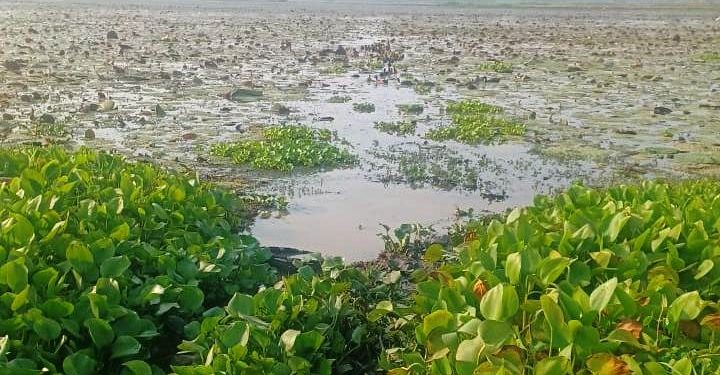Jajpur: The fast disappearance of wetlands in this district has become a cause for concern. The wetlands play an important role in maintaining bio-diversity, helping in water conservation and purification, and also in controlling floods. They also hold the key to climate regulations. However, now the very existence of the wetlands is in danger due to changes in land status, and the discharge of solid and liquid wastes by industrial firms that have mushroomed in the district. Also, pollution is eroding and destroying wetlands rapidly. Environmentalists have pointed out that wetlands need to be safeguarded for protecting the environment.
As per reports Jajpur district is spread over an area of 2,885 square kilometres. Out of this total area, 15,714 hectares are wetlands. Among them, 380 wetlands are more than 2.25 hectares in size while the remaining 2,169 are less than 2.25 hectares. The Union Forest, Environment, and Climate Change Ministry directed all state governments March 8, 2022 to identify and demarcate the wetlands on the basis of Wetland Conservation and Management Rules-2017. It should be stated here that the State Wetland Management Authority (SWMA) held its last meeting, August 17, 2019.
During the meeting, a technical committee was formed comprising officials of Forest and Environment, Water Resources, Housing and Urban Development, Panchayatiraj and Drinking Water, Revenue and Disaster Management, and Fisheries departments. The panel was asked to identify all the wetlands in Odisha and submit a report so that a special action plan could be prepared for their protection and preservation. However, the efforts of the committee have been pretty disappointing, to say the least.
The Union Forest, Environment, and Climate Change Ministry included Sukinda creek (Pata) in the Wetland Atlas of India in 2010. It had shown that the wetland was spread over 400 acres even though the record of the Odisha government says that ‘Sukinda Pata’ encompasses an area of 6,000 acres. The Sukinda Creek is found on land belonging to the Solagadia, Labang, Sorisha, Marthapur, Baliposhi, Gotua, Kimbhiragadia, Marutikar, Jagadiha, and Chakua revenue mouzas. It extends from the west of the Brahmani River to Jokadia and Mundomal in the east. Nothing was done, however, to rectify the mistake in the Wetland Atlas. The Gonda nullah, which is always in the news for pollution due to the discharge of toxic effluents by industrial firms, originates from the hills in Sukinda and neighbouring Keonjhar district. During floods, Sukinda Creek remains submerged in the water of Gonda Nullah.
Moreover, the district has also several other prominent wetlands like Mantira Pata, Gadamadhupur Pata, Jenapur Pata, Sorisha Pata, and Bena Pata. However, these wetlands are slowly losing their existence as development works are being undertaken. The importance of wetlands in maintaining bio-diversity and environment cannot be ignored. Various plants, insects, aquatic animals, reptiles, birds, fishes, and mammals depend on these wetlands for their habitat and food Members of Kalinganagar Surakshya Samiti have demanded action to protect the wetlands in Jajpur district. They have written to the Principal Secretary, Forest, Environment and Climate Change Ministry, Jajpur Collector, and DFO, Cuttack to look into the matter and restore the wetlands to their original glory.







































